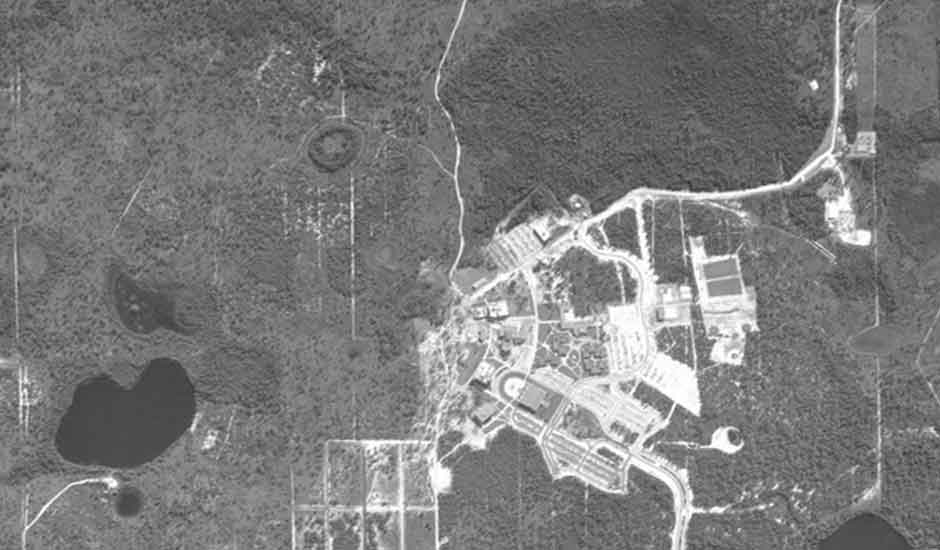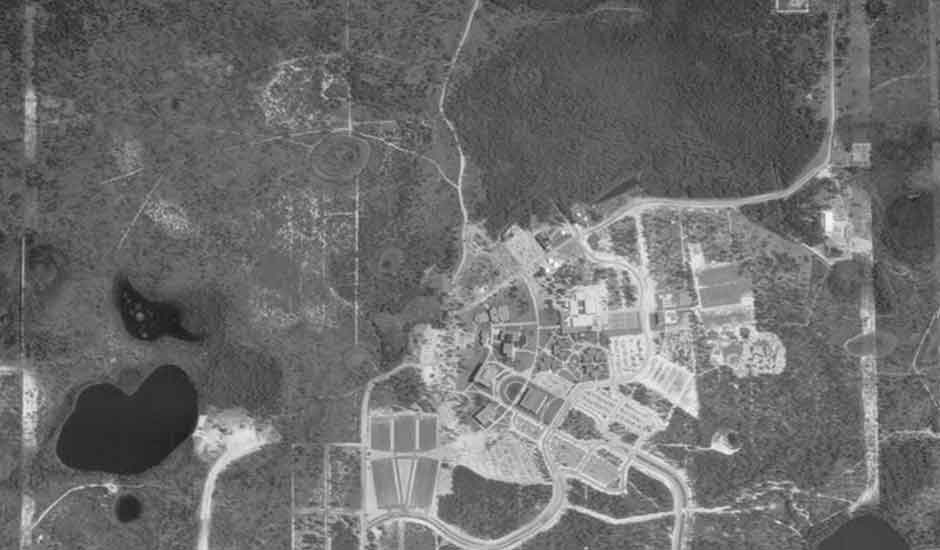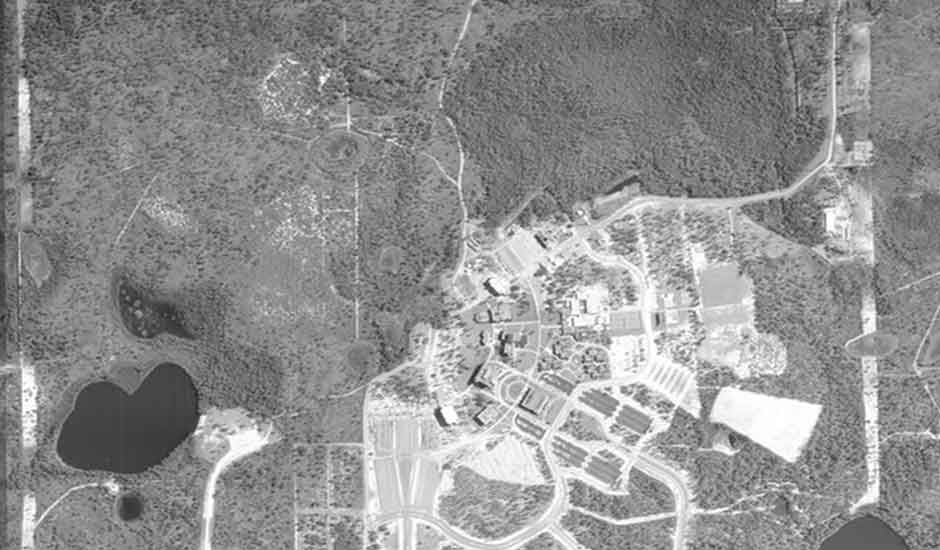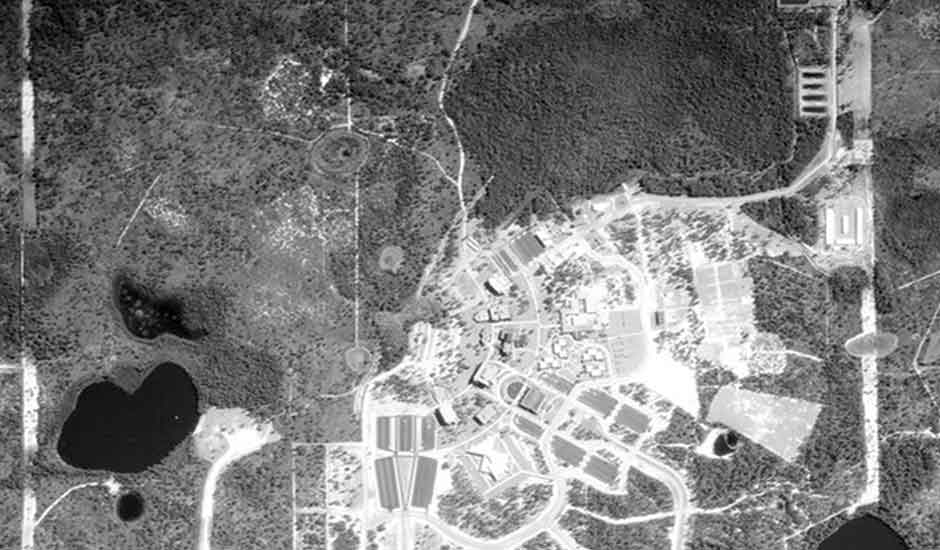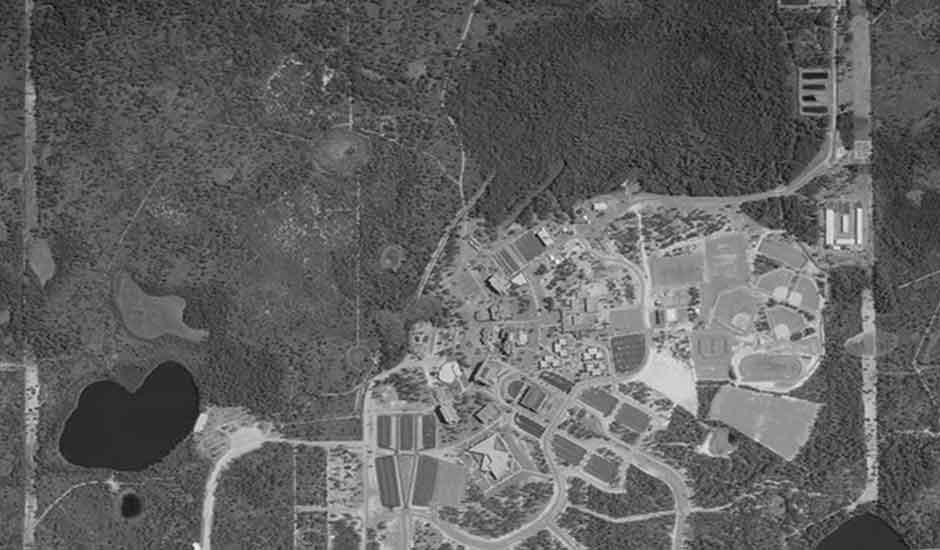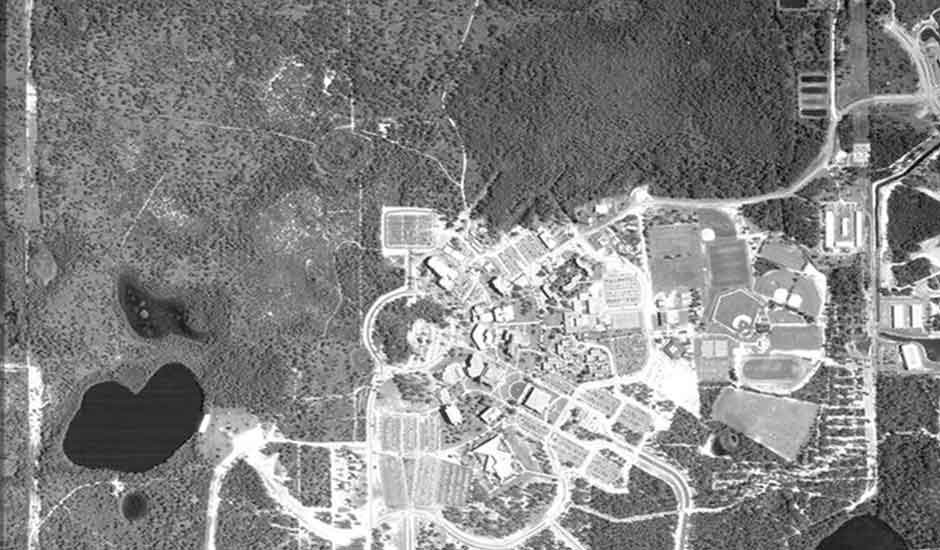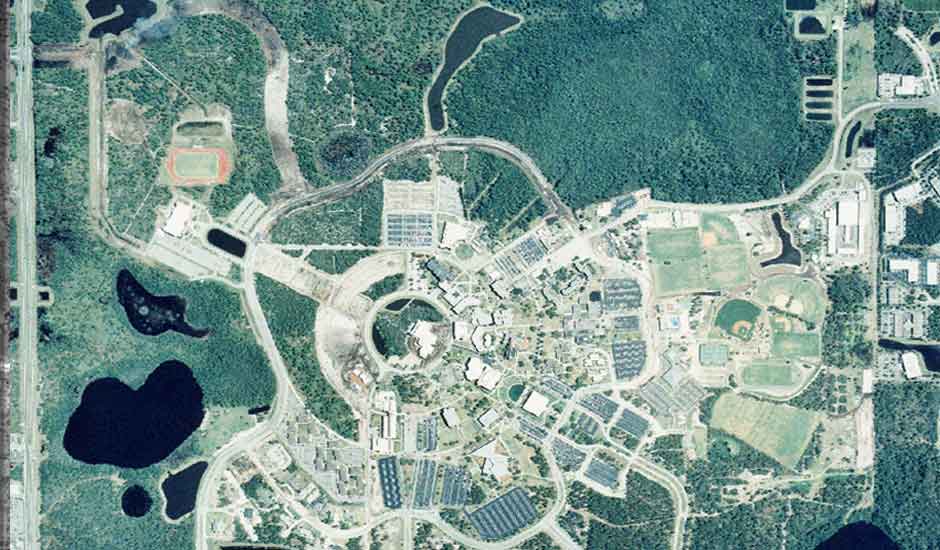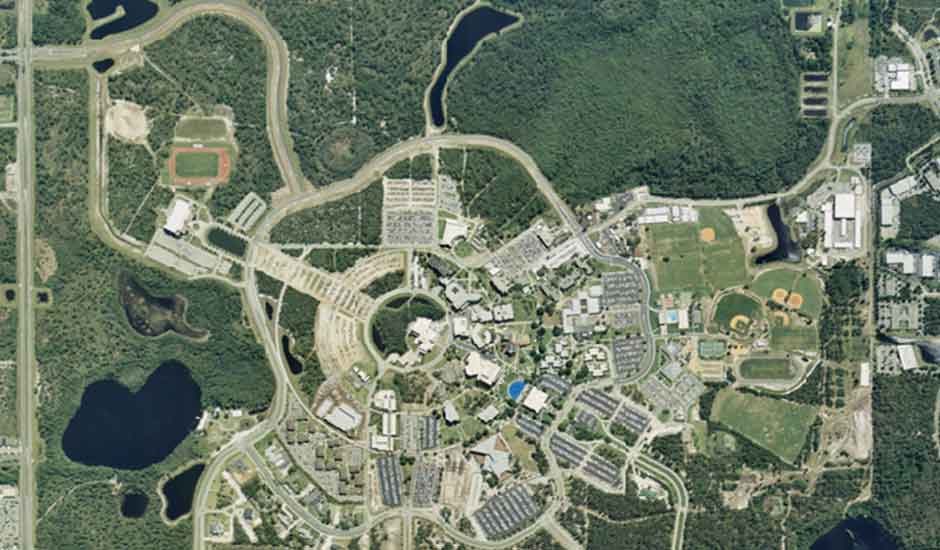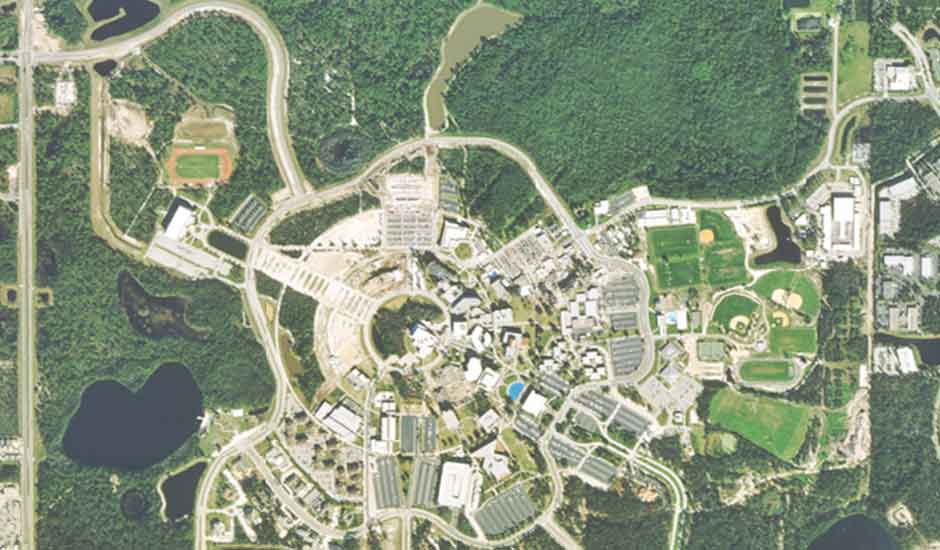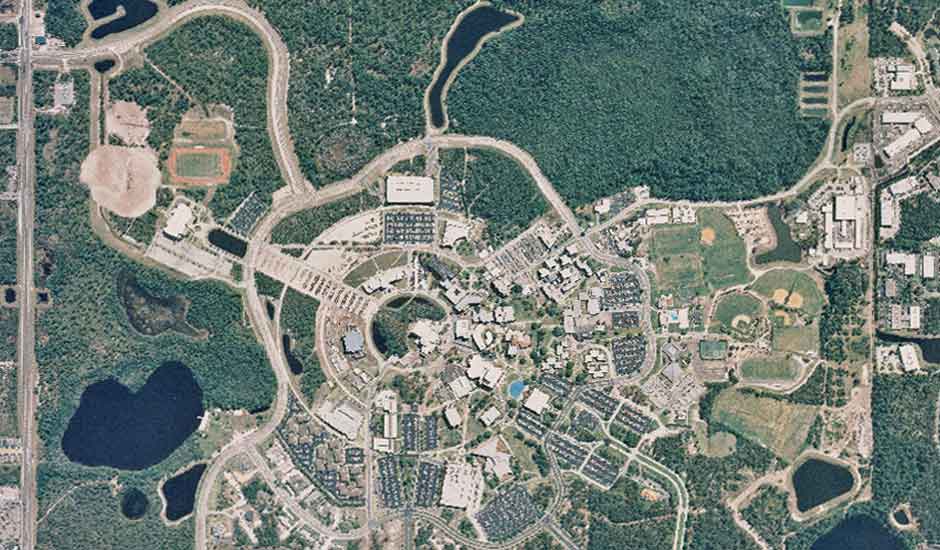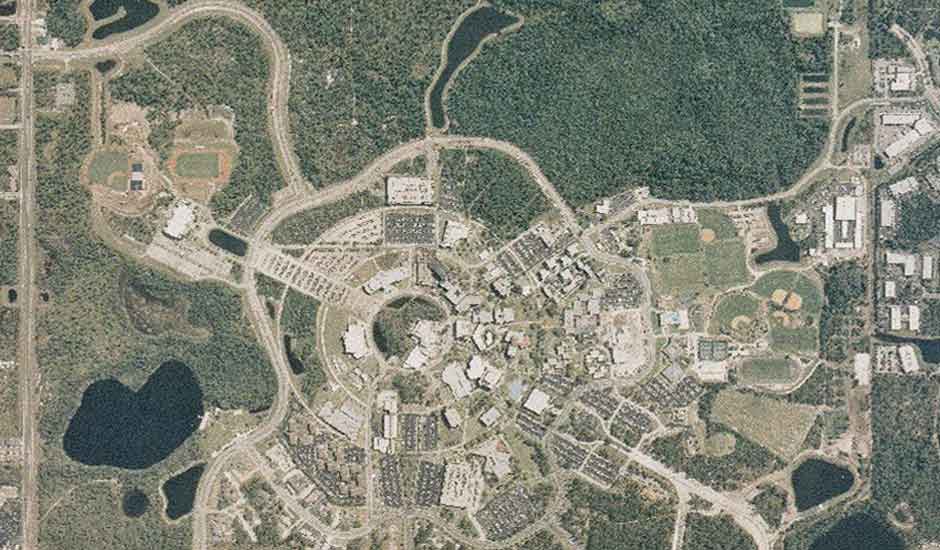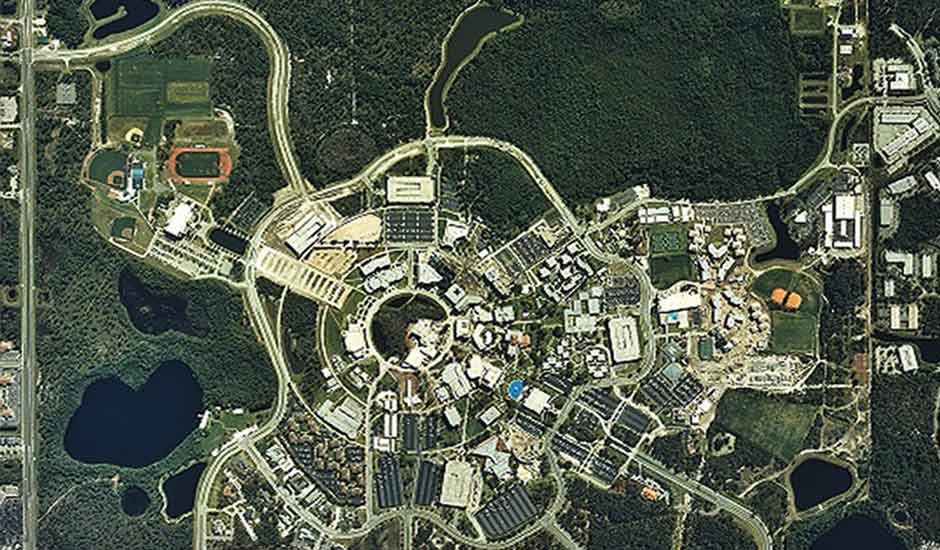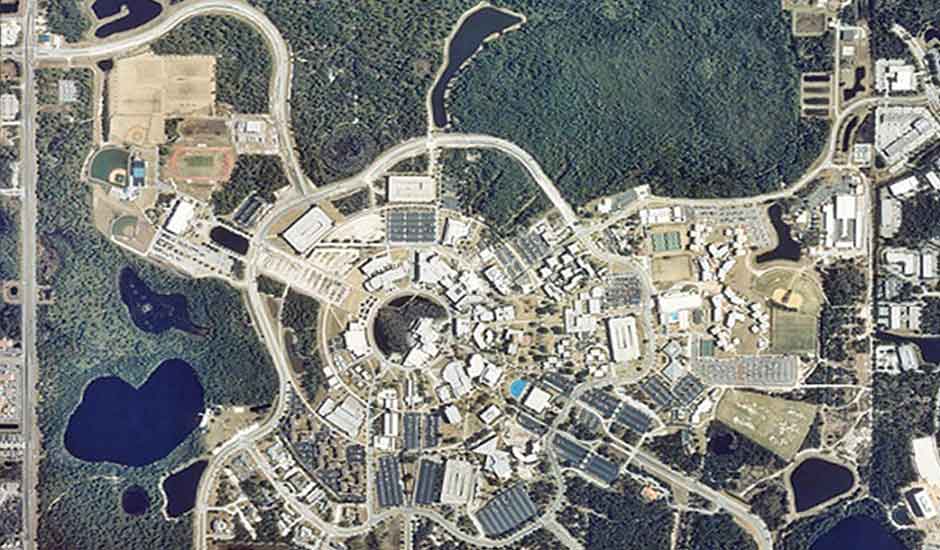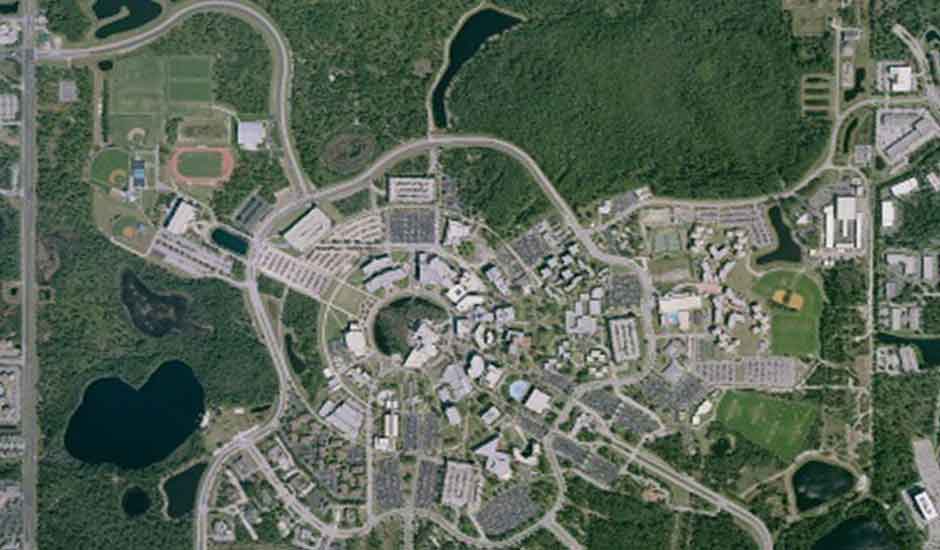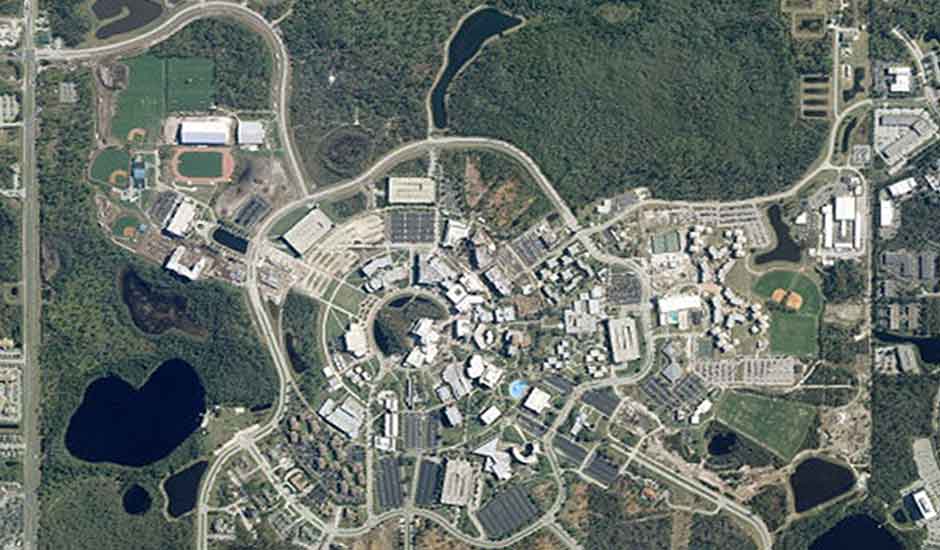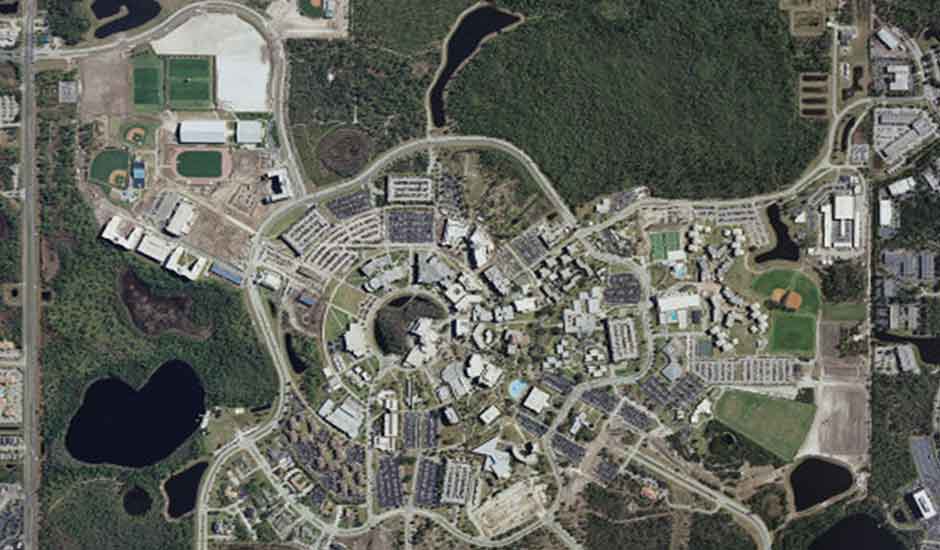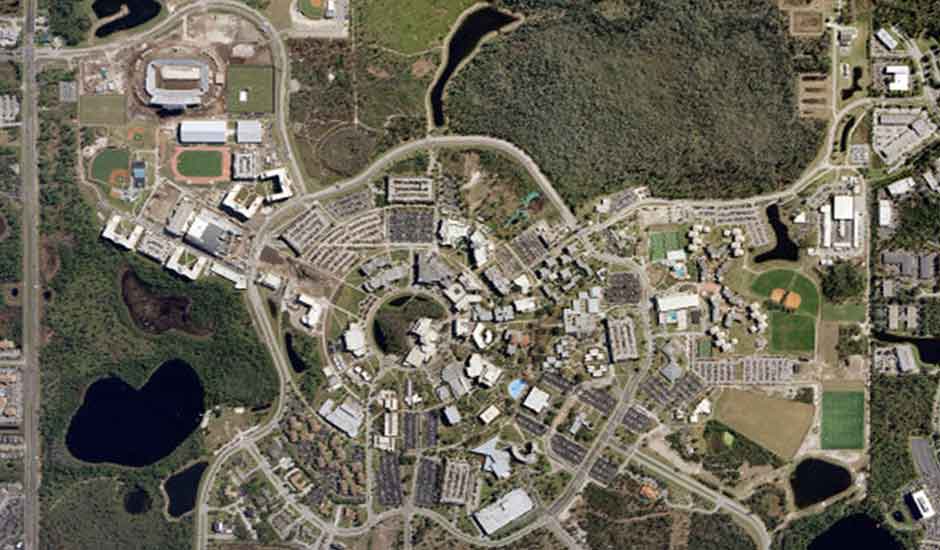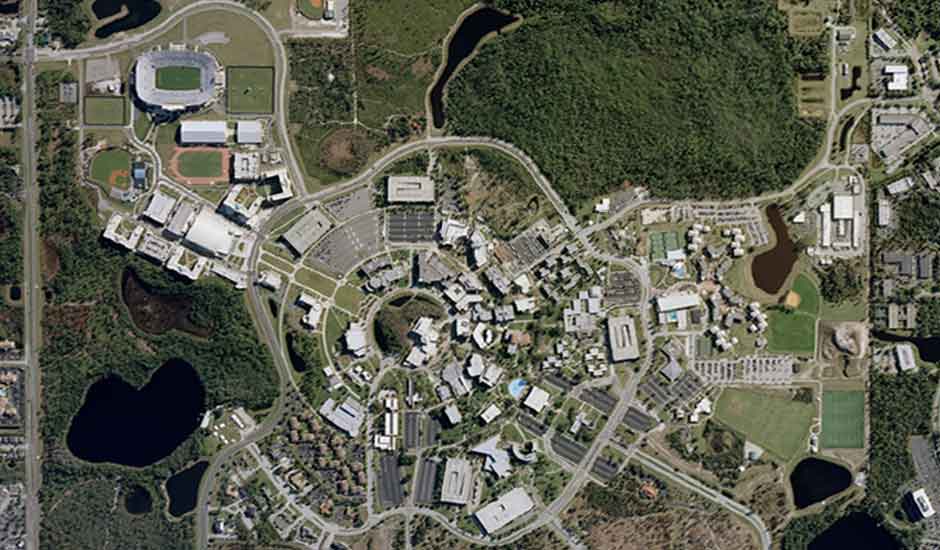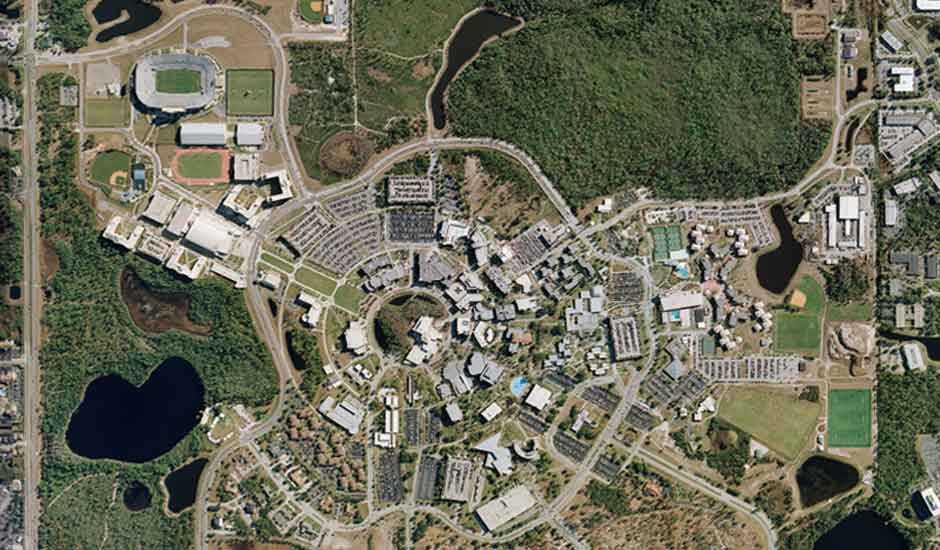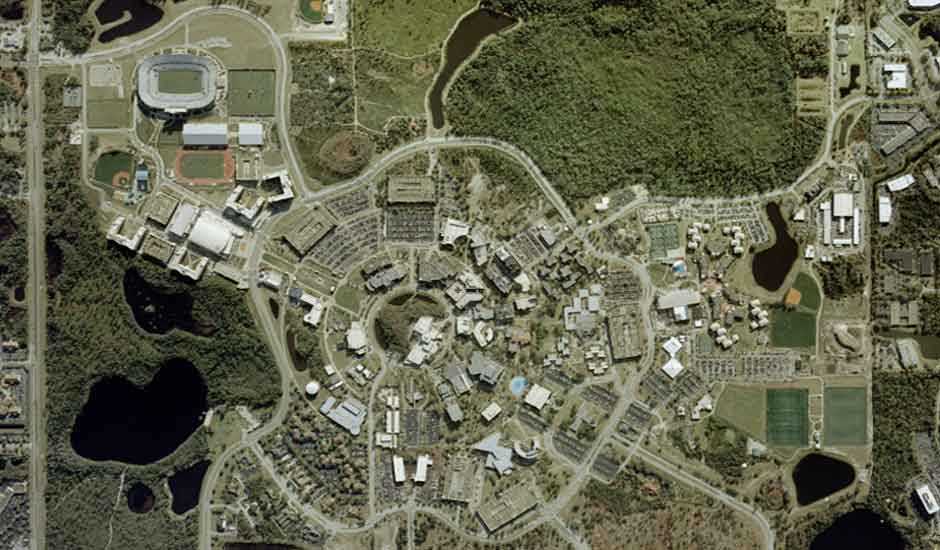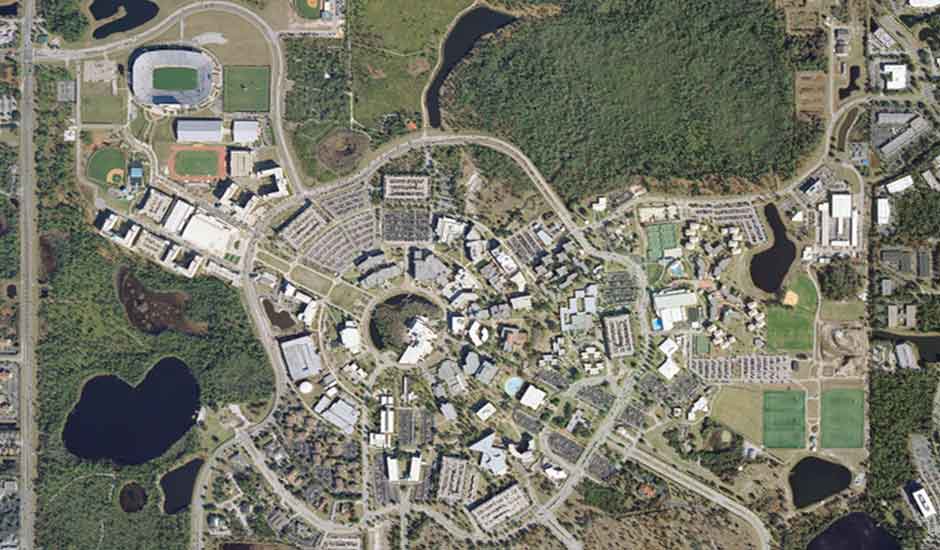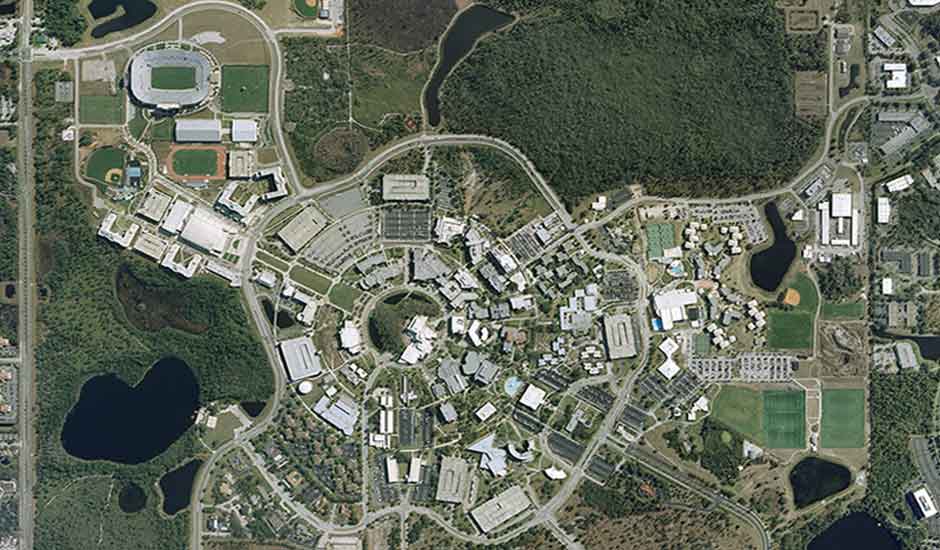Origins
1966
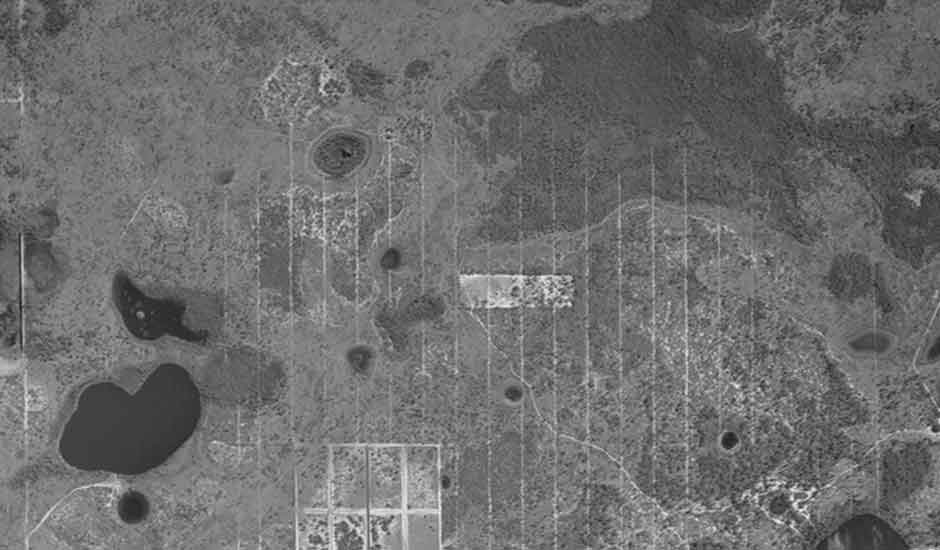
Promised Land
J. Charles Gray was only a few years into his law practice. Yet his powerful influence in the mid-1960s made a nameless university Florida’s number one priority. Here, Gray recounts the origin of the university.
In 1963, Florida Gov. Cecil Farris Bryant signed a bill creating a Central Florida university, but without funding, it was dormant until 1965. I became involved with the university through a series of political campaigns.
In 1960, I had chaired the winning campaign for Doyle Conner for state agriculture commissioner. Later, in 1964, there were six candidates running for Florida governor. The least likely to win was former mayor of Jacksonville Haydon Burns. I watched Burns standing on a bare stage, talking about his philosophy of government, and thought, “I believe that.” So, after meeting Burns and his wife, Mildred, I agreed to chair his campaign.
We put together an incredibly organized campaign that nailed down every precinct and shifted the power base from Jacksonville to Central Florida. It was a solid win against great odds, and Burns served as Florida governor from 1965-67.
I returned to Orlando with Burns to prepare for a news conference and during our time together, we discussed Conner’s earlier campaign. Chairing Conner’s campaign had been great fun. When Conner won, I asked if he could send me some legal business, and he offered me a job in Tallahassee, which held no interest to me. I still thought of Conner as a wonderful friend, but I was disappointed at the time.
Burns processed that information, and when he won, he asked me, “What do you want?” I replied, “Number one, I want a new university.” He promised it and told me to list my other requests, which were: an east-west expressway, a Board of Regents term for a dedicated campaign worker, and my suggested state road board member, among others. I didn’t ask for anything for myself.
Burns fulfilled every promise except one. After reading in a newspaper that he had appointed someone else to the state road board, I called and questioned him. He answered, “Charles, getting a new university authorized, implemented and appropriated is not easy. I made a deal with the most powerful man in the legislature, Speaker of the House E.C. Rowell, who said he could get it done only on the condition that his best friend was appointed as a state road board member.” He continued, “I had to make a deal, and I’m sorry about that. That university was your first choice, and that’s what I had to do.”
I’d say it was an excellent trade-off. ✦
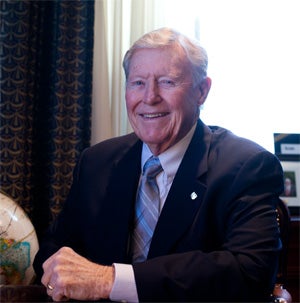
In addition to his practice, which he continues as chairman of the board and founding director of the GrayRobinson law firm in Orlando, Gray served in many other leadership positions, including Orlando city solicitor, and chair of the Florida State Turnpike Authority, Economic Development Commission of Mid-Florida and the UCF Foundation.
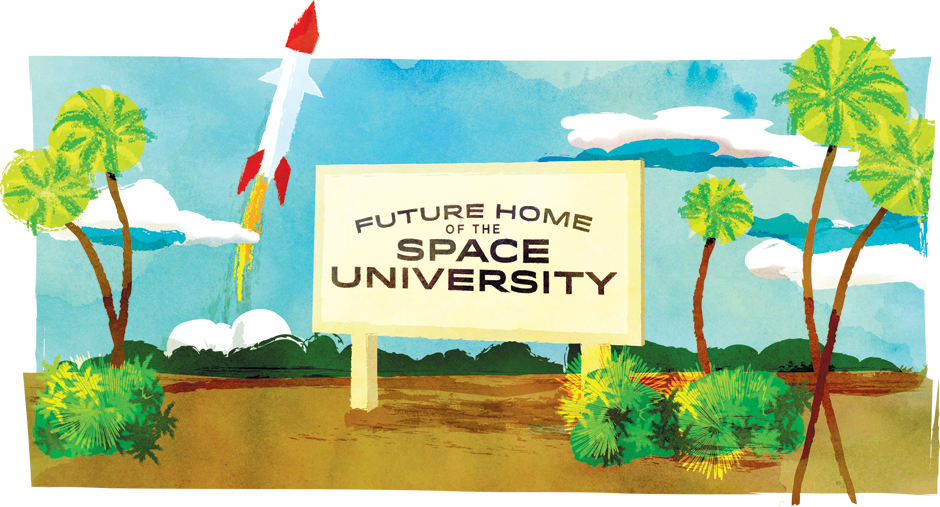
A Space University In the early 1960s, Orange County’s future seemed increasingly tied to the aerospace industry.
THE MERCURY PROGRAM from nearby Cape Kennedy captivated the nation, and the new Martin Marietta facility in south Orange County was creating a new generation of rockets and missiles.
Business, professional and government leaders quickly enlisted in the cause of building what some called a “space university” to educate students for promising Space Age careers in engineering, electronics and other technological professions needed to sustain the growth of these industries in Central Florida. William Dial, a bank president and lawyer with political connections in Tallahassee, began lobbying for passage of what became Florida Senate bill 125. He enlisted the aid of former state Senate President William Shands, who used his many connections to help convince lawmakers to support the bill. With Shands’ help, and the support of Orlando Sentinel publisher Martin Anderson and Senator Beth Johnson of Orange County, the bill passed both the House and Senate. A citizens’ advisory committee, led by Dial, was formed to help finance and build public support for the university.
On Jan. 24, 1964, the Board of Control chose a tract along Alafaya Trail in northeast Orange County. It was selected as being the most accessible to the largest number of people in the east central Florida area. Most of the land was acquired from Frank Adamucci, a New Jersey building contractor who donated 500 acres and sold another 500 acres for $500,000. Donations from other landowners made the total size of the parcel 1,227 acres.
In order to be eligible for funding from the 1965 Florida Legislature, the site had to be available immediately. It was anticipated that Orange County would buy the property and donate it to the state, but the county lacked the necessary funds.
A total of 89 Orange County residents pledged $1 million in cash and securities to secure the purchase of the site. Millions more would be needed to begin construction.
Dial flew to Tallahassee to argue for immediate funding. To fulfill the pledge he made to his campaign manager, Orlando resident J. Charles Gray, the governor agreed and ordered the project take precedence on the higher-education funding priority list. ✦
A BOLD MARK
THE CREATION OF FTU’S institutional seal resembled the start of the university itself. Credit founding President Charles Millican with making bold decisions but also receiving important assists from others.
Dr. Millican’s newly formed executive staff assembled lists of designs and color combinations from other Florida universities, attended university seal conferences, and consulted with various artists before compiling a final design criteria list.
Nearly two years passed before the seal of FTU finally made its public debut on April 5, 1968. The final seal was officially unveiled by Dr. Millican from a design by Jim Shattuck and Norman Van Meter. The design was composed of Pegasus, intended to “bridge the gap between the humanities and space technology.” It was chosen as a symbol of the university’s goal of moving forward and making a “rendezvous with space and the stars.” Just as had occurred with the university’s name and motto — “Reach for the Stars” — FTU’s close proximity to Cape Kennedy factored significantly. Dr. Millican also chose black and gold as the school colors during the design process. ✦
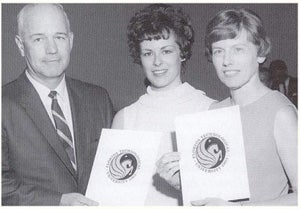
Dr. Charles Millican, left, displays the new FTU seal in 1968. More than 50 proposals were considered in the process.
